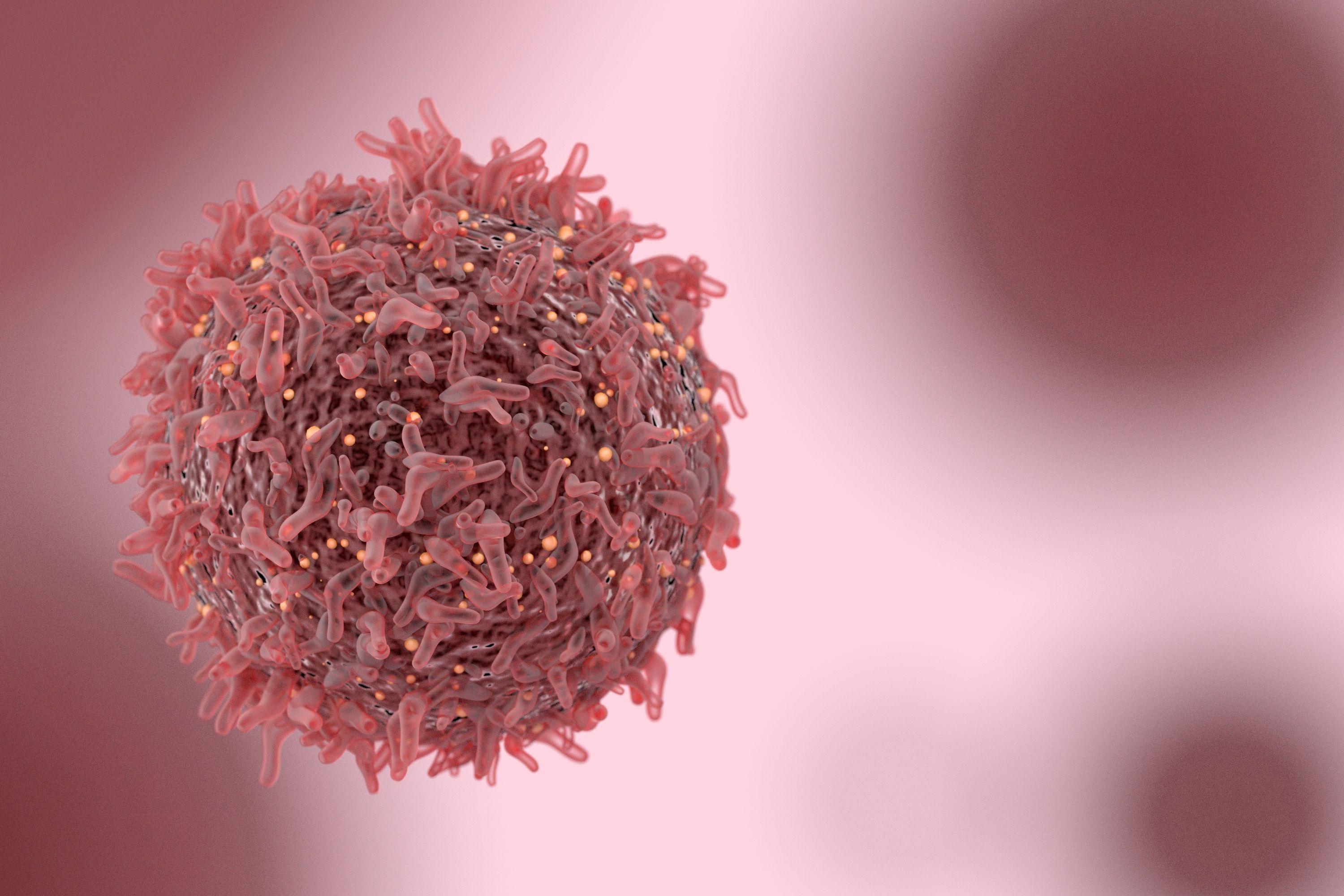Quizartinib With Chemotherapy Prolongs OS in Newly-Diagnosed FLT3-ITD-Positive AML
In the phase 3 QuANTUM-First trial, the combination of quizartinib and chemotherapy met its primary end point and analyses of the secondary end points are ongoing.

Quizartinib (AC220) combined with induction and consolidation chemotherapy to treat FLT3-ITD-positive acute myeloid leukemia (AML), achieved a statistically significant and clinically meaningful improvement in overall survival compared with chemotherapy alone, meeting the primary end point of the phase 3 QuANTUM-First trial.1
Quizartinib is a small molecule receptor tyrosine kinase inhibitor (TKI) of FLT3. In both the pediatric and young adult patient populations as well as in the adult patient population, the agent is undergoing clinical development in North American and Europe for the relapsed or refractory setting. Considering that FLT3 mutations are present in roughly 25% of patients with AML, and survival and risk of relapse are unfavorable, positive phase 3 results from newly-diagnosed and relapsed/refractory quizartinib clinical trials may serve an unmet medical need.
“The results of the phase 3 QuANTUM-First trial showed that adding quizartinib, a potent and selective FLT3 inhibitor, to chemotherapy significantly prolonged overall survival in patients with newly diagnosed FLT3-ITD positive AML,” said Ken Takeshita, MD, global head, R&D, Daiichi Sankyo, in a press release. “We look forward to sharing the QuANTUM-First data with the hematology community and will initiate discussions with global regulatory authorities.”
QuANTUM-First (NCT02668653) is a double-blind, placebo-controlled study of approximately 539 patients conducted at 200 centers across North America, South America, Europe Asia, and Oceania. Patients were randomized 1:1 to receive either chemotherapy and quizartinib or chemotherapy and placebo. Patients in the experimental arm of the study receive a maximum of 2 cycles of cytarabine and daunorubicin/idarubicin, followed by quizartinib. Then, patients are given up to 4 cycles of cytarabine followed by quizartinib and hematopoeitic stem cell transplant as consolidation therapy. Quizartinib treatment is then continued in the arm for up to 36 cycles.2
In the comparator arm, patients receive 2 cycles of cytarabine daunorubicin plus idarubicin followed by placebo as induction therapy. Patients are then given up to 4 cycles of cytarabine followed by placebo and HSCT. Placebo is then continued in the arm for up to 36 cycles.
In addition to OS, the study also evaluated secondary end points, which included event-free survival, complete remission (CR) rate, CR rate at the end of induction, the percentage of patients achieving a CR with FLT3-ITD minimal residual disease negativity, the percentage of patients with adverse events, and pharmacokinetics.
To be eligible for enrollment in the study, patients were required to be aged between 18 and 75 years with newly-diagnosed primary or secondary AML, an ECOG performance status of 0 to 2, presence of a FLT3 mutation, and adequate hepatic and renal function. All patients must have been receiving a 7 +3 induction chemotherapy regimen at the time of study enrollment.
Several factors were grounds for exclusion from the study including diagnosis of acute promyelocytic leukemia with certain molecular features diagnosis of secondary AML to prior chemotherapy or radiotherapy for other neoplasms. Prior treatment for AML with few exceptions, prior treatment with the study’s investigational drug or another investigational drug within 30 days of study screening also caused many patients to be excluded from the study. Finally, the presence or history of other malignancies and other comorbidities that may interfere with study treatment was an exclusion criterion.
Full data from QuANTUM-First will be presented at an upcoming medical meeting and shared with national and global regulatory bodies.1
References:
1. Quizartinib added to chemotherapy demonstrates superior overall survival compared to chemotherapy alone in adult patients with newly diagnosed FLT3-ITD positive AML. News release. Daiichi Sankyo Company, Limited. November 18, 2021. Accessed November 22, 2021. https://bit.ly/3nCDHma
2. Quizartinib with standard of care chemotherapy and as continuation therapy in patients with newly diagnosed FLT3-ITD (+) acute myeloid leukemia (AML) (QuANTUM-First). Clinicaltrials.gov. Accessed November 22, 2021. https://clinicaltrials.gov/ct2/show/NCT02668653
SELECT-AML-1 Trial of Tamibarotene Combo in AML Discontinues Enrollment
August 13th 2024Following a futility analysis, the phase 2 SELECT-AML-1 trial of tamibarotene combined with venetoclax and azacitidine in newly diagnosed RARA-overexpressed acute myeloid leukemia will discontinue enrollment.
Read More